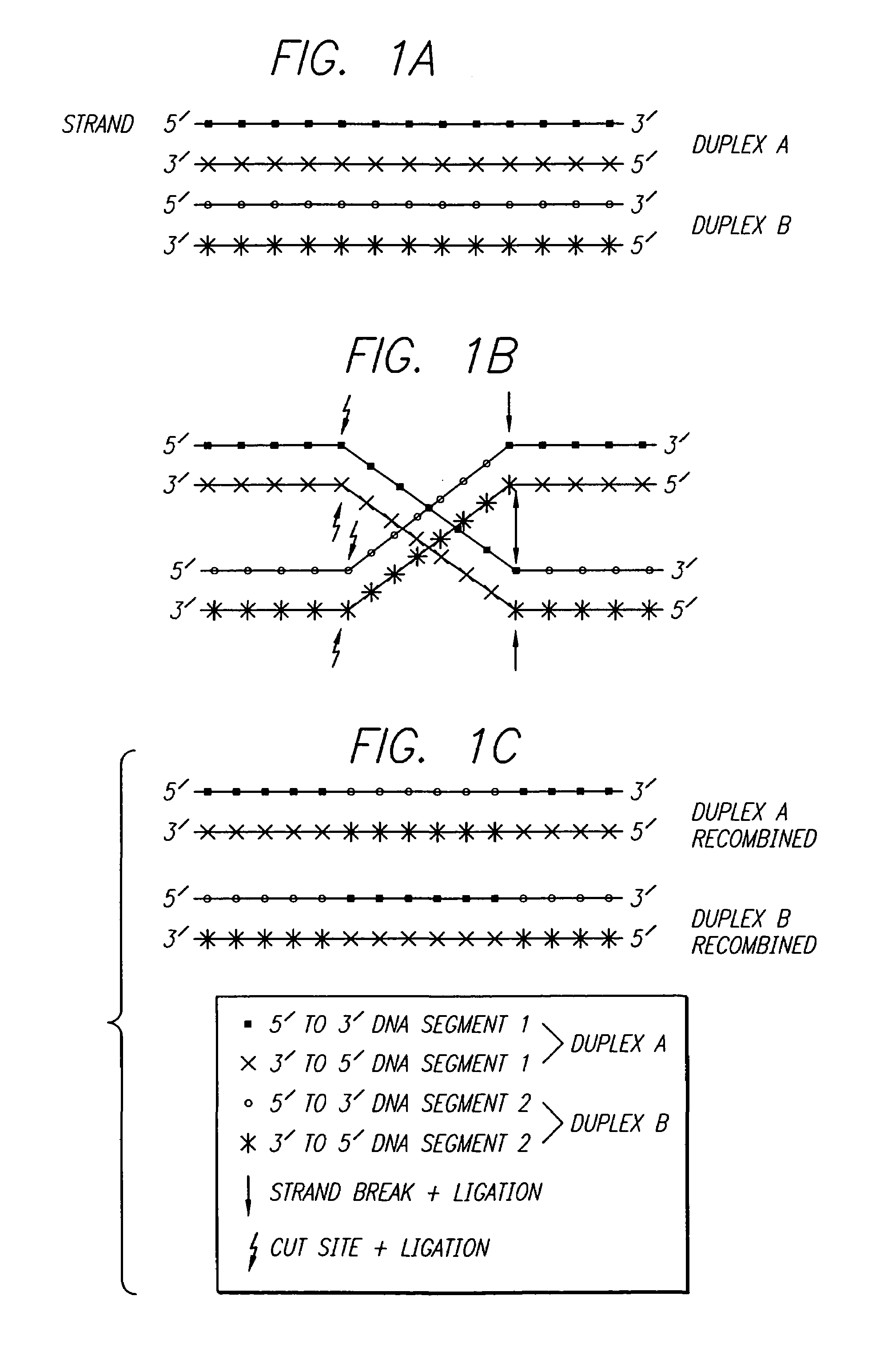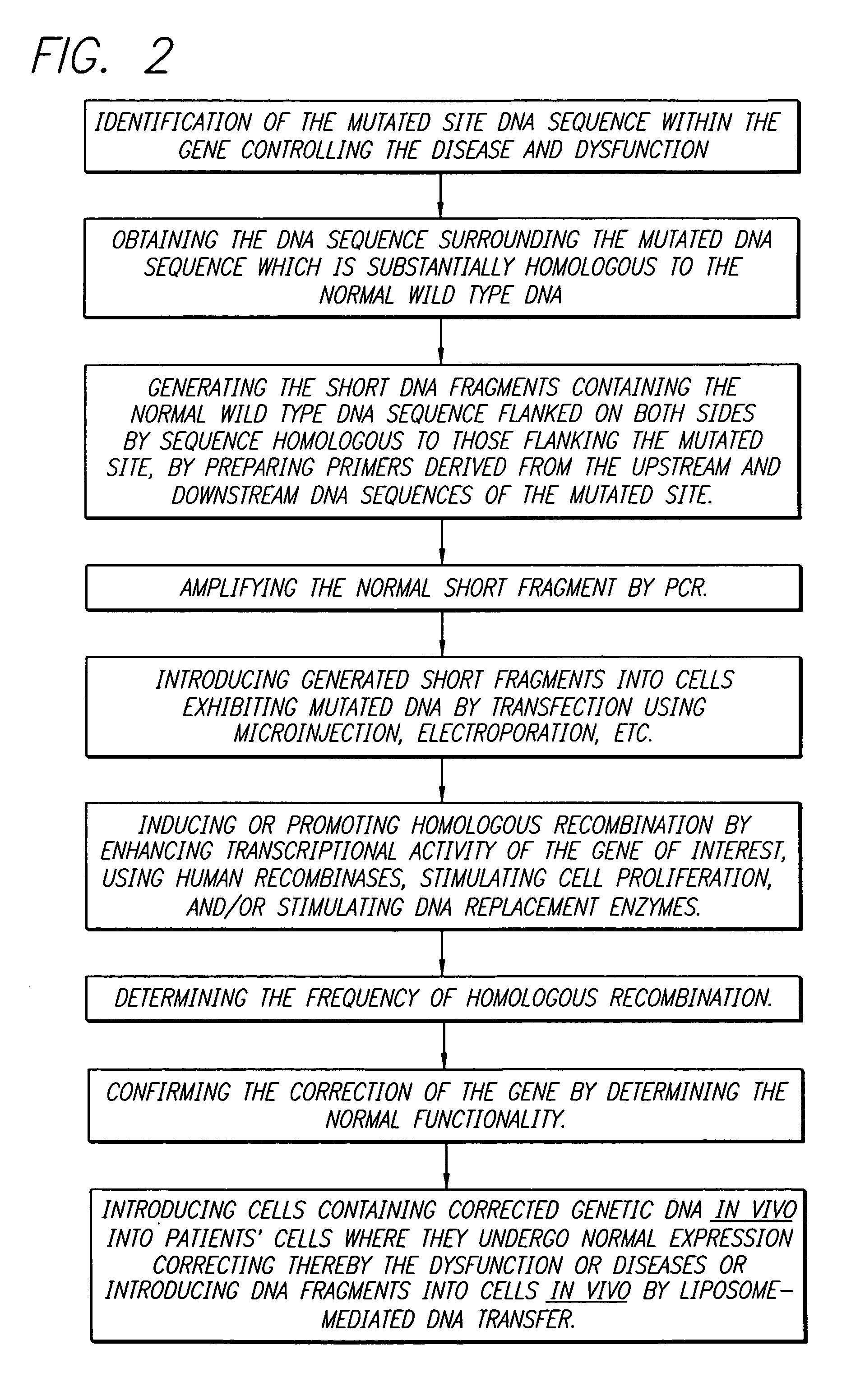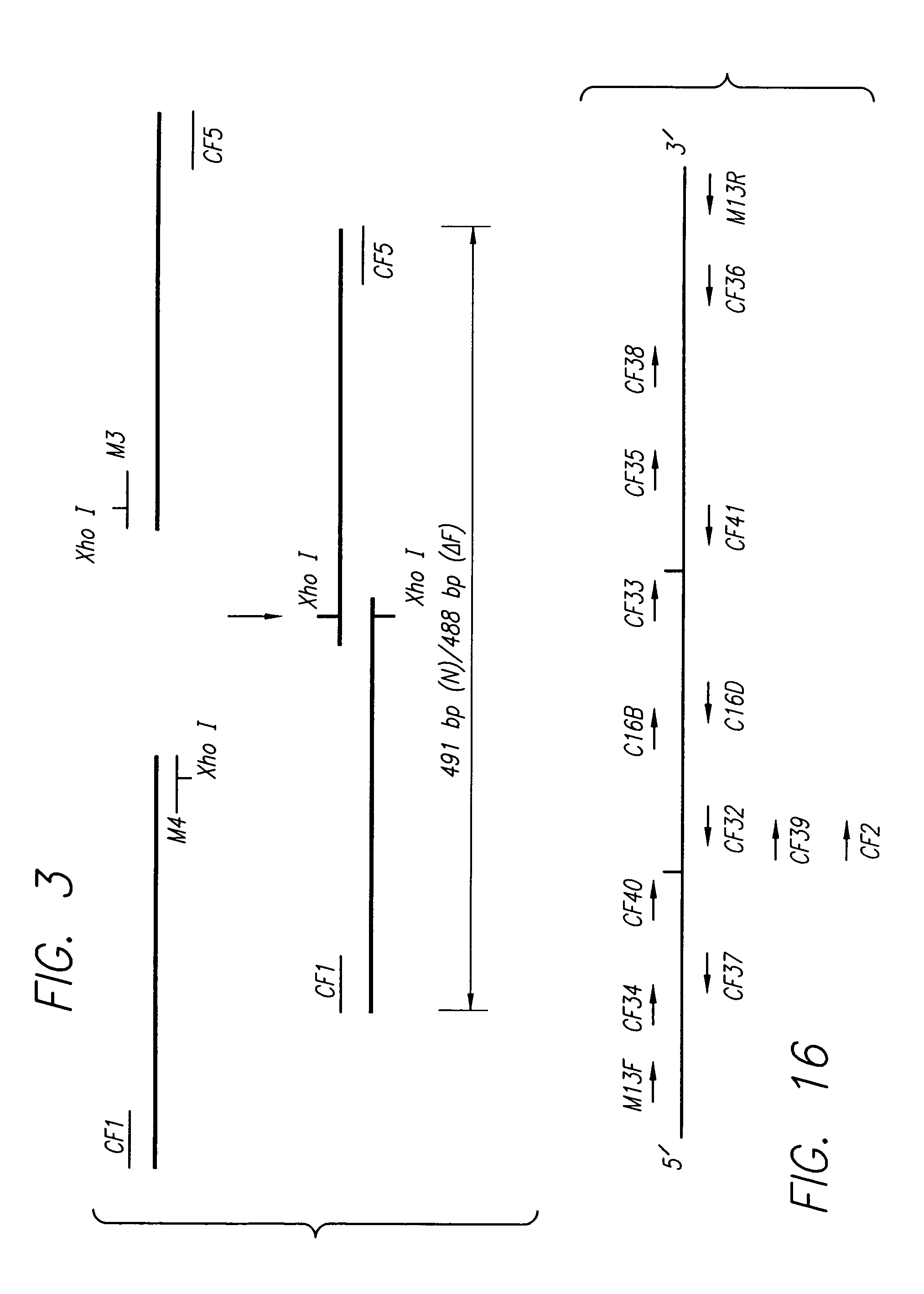Gene therapy by small fragment homologous replacement
a gene therapy and small fragment technology, applied in the field of gene therapy with small fragment homologous replacement, can solve the problems of not correcting the defective cftr gene sequence, not ensuring the effective regulation of the cftr gene, and reducing the effect of homologous replacemen
- Summary
- Abstract
- Description
- Claims
- Application Information
AI Technical Summary
Benefits of technology
Problems solved by technology
Method used
Image
Examples
example 1
A Method and Conditions for Culturing Cells
[0320]This example illustrates procedure and conditions used for culturing cells.
[0321]The airway epithelial cells were grown either in serum free MLCH-8e (In Vitro Cell Dev. Biol., 36:411 (1990) or in the case of transformed cells, Eagle's minimal essential medium (MEM) supplemented with 10% FBS, 4 mM glutamine, and antibiotics. Tissue culture plates were coated with fibronectin (FN), collagen (C) and bovine serum albumin (BSA). The growth medium was replaced with fresh medium every other day and the stock cultures were subcultured on reaching 80–100% confluence by trypsinization at a split ratio of between 1:2 to 1:4.
[0322]Tracheal epithelial cells were isolated and cultured as described. Non-transformed cells were grown in modified serum-free LHC-9 medium (MLHC-8e) on tissue culture plates that had been precoated with fibronectin, collagen, and bovine serum albumin according to J. Tissue Culture Methods, 9:43 (1985).
example 2
Development of Cell Line ΣCRTE29o-
[0323]This example illustrates procedure and conditions used for development of ΣCRTE29o- cell line. Examples 2–7 are published in Am. J. Respir. Cell Mol. Biol., 8:52259 (1993).
[0324]Pure cultures of epithelial cells were transfected as described in PNAS (USA), 85:5951–5955 (1988); PNAS (USA), 89:5171–5175 (1992). The cells were grown in 100-mm precoated tissue culture dishes to 70–80% confluence and transfected with the linearized pSVori- vector obtained from Dr. John Murnane, a plasmid containing a replication deficient SV40 genome, via calcium phosphate precipitation PNAS 8515951–5955 (1988). The transfected cultures were grown in MLHC-8e medium at 37° C. under 5% CO2 in air until cells with altered growth characteristics appeared (BioTechniques, 5:740–749(1987). Cell transformants were isolated by trypsinization and all the colonies were pooled and designated ΣCFTE29o-.
[0325]To enhance the ability of the cells to survive a crisis that generally...
example 3
Immunocytochemical Staining
[0326]This example illustrates a method used for immunocytochemical staining.
[0327]Cells grown on well slides (Lab-Tek, Naperville, Ill.) to various stages of confluence were washed three times with ice-cold phosphate-buffered saline (PBS) and then fixed with −20° C. acetone / methanol (2:3). After drying in air at room temperature, cells were rehydrated in PBS.
[0328]The primary antibodies used in these studies were L19 monoclonal antibody against the SV40 T-antigen (diluted 1:5). AE1 / AE3 anti-cytokeratin antibody (diluted 1:10) (Boehringer Mannheim, Indianapolis, Ind.), and E9 monoclonal antibody against the junctional complex adhesion protein (diluted 1:10), cell CAM 120 / 80 described in Cell Biochem, 34:187–202(1987). The slides were washed with three changes of PBS containing 1% normal goat serum (30 min) before exposure to the secondary antibody (goat anti-mouse Ig / G-fluorescein isothiocyanate conjugate) diluted 1:40 in the buffer described above and vie...
PUM
| Property | Measurement | Unit |
|---|---|---|
| concentration | aaaaa | aaaaa |
| concentration | aaaaa | aaaaa |
| volume | aaaaa | aaaaa |
Abstract
Description
Claims
Application Information
 Login to View More
Login to View More - R&D
- Intellectual Property
- Life Sciences
- Materials
- Tech Scout
- Unparalleled Data Quality
- Higher Quality Content
- 60% Fewer Hallucinations
Browse by: Latest US Patents, China's latest patents, Technical Efficacy Thesaurus, Application Domain, Technology Topic, Popular Technical Reports.
© 2025 PatSnap. All rights reserved.Legal|Privacy policy|Modern Slavery Act Transparency Statement|Sitemap|About US| Contact US: help@patsnap.com



